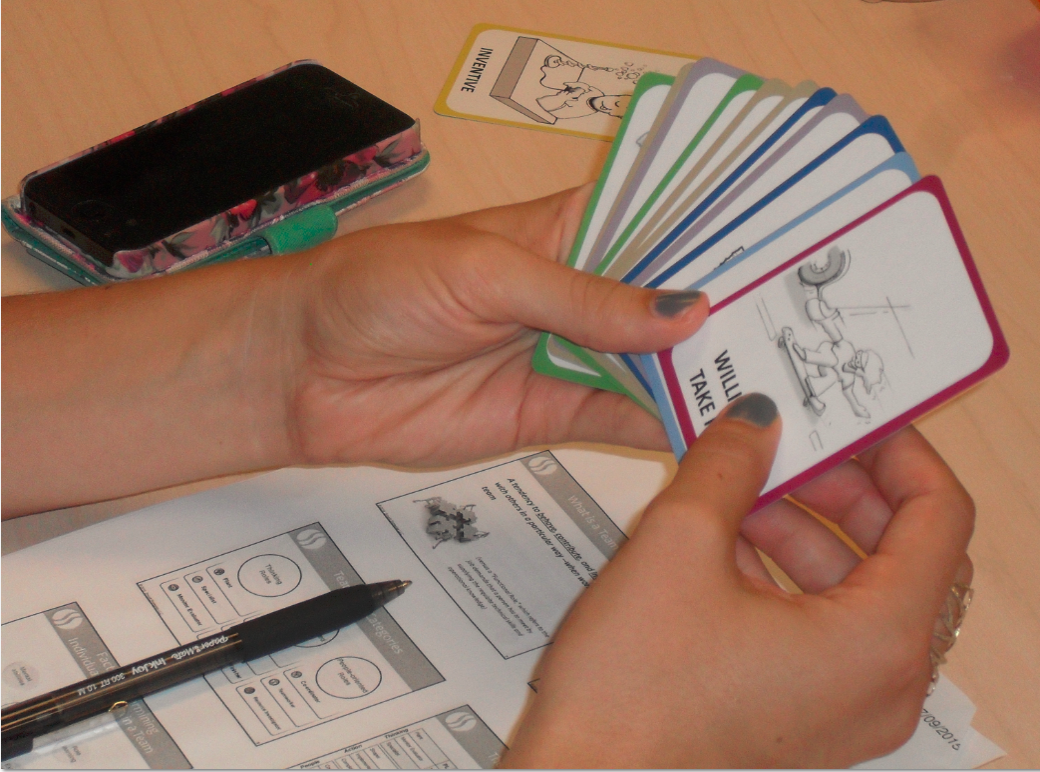A Simple Game Highlights the FUNdamentals of Awesome Teams
What if you could infuse every member of your work team with an instinctive sense of his or her own unique strengths, and an ability to see the bigger picture of how the team can function optimally as a whole?
There’s no shortage of personality tests and tools designed to give insight into our individual patterns and preferences, but when it comes to working with teams, nothing beats Belbin Team Roles for examining how individuals function within a team, and how teams can be organized to maximize not only performance, but also satisfaction, engagement and sense of purpose.
As a Belbin trainer, I don’t like to simply transmit the intellectual content of the Belbin method to the groups I work with, and then walk away. At the end of my training sessions, I want the participants to have internalized an understanding of using Belbin and to realize the power of using it in an instinctive, practical and permanent way.
So I designed a game. Because nothing opens people’s minds to new ideas like play.
Let me introduce you to (drumroll, please)...Team Role Poker.
In my sessions, I divide participants into table teams of four to six. Each table team gets a Team Role Poker deck—45 cards, each of which has a certain quality or behavioral trait written on it (for example, “outgoing,” “detail-oriented,” “problem solver,” etc.) along with an artist sketch depicting that quality.
There are identifiers on the cards that represent each of the nine Belbin team roles and the three Belbin categories (Thinking, Acting or People).
To start, all 45 of the cards are dealt. Then, over the course of three rounds, each person collects the cards that best match what they would like to contribute to this new “table team.”
Then I lead the whole group in a debrief session. I put a handful of questions up on the screen to guide the discussion:
- Did the process feel collaborative or competitive?
- Were team members fighting over certain cards, while others were left on the table as unclaimed?
- Is there a good mix of team roles represented, or is the team slanted in favor of certain roles or categories?
You can see light bulbs going on over people’s heads at this stage of the game, and the conversation gets really interesting really quickly as the real-world applications become clear.
People start to understand the concepts of team surpluses and team voids (and the need to fill them). If one team has left all their idea-generating cards on the table but the team to their left was fighting over them, maybe there’s an opportunity to borrow that skillset from that team for a brainstorming session.
Participants start to think: “How can we best use the people on this team to make sure all these cards are getting played? We need all these attributes on the team. If we have 10 necessary qualities discarded on the table, what kind of team are we? How can we allocate those contributions, or at least borrow them from other teams as needed?”
I love this exercise, because it helps people to more fully understand the way teams work, and makes the sometimes-elusive nature of rock star, high-performing teams concrete and attainable for everyone. It’s not a mystery. These are tools and insights they can start using now, today, to transform how they approach and think about their work and to take their teams to a whole new level of achievement (and satisfaction).
But this layer is just the beginning of what the Belbin method offers. Once people understand in their bones who they are and who their teammates are, a whole new world opens.
As a trainer who’s been exploring this work for years, I still find new ways to use my roles of Resource Investigator and Plant (Innovator) in bold, inventive ways to support the goals of Smartt Strategies (like designing Team Role Poker!).
But it’s also crucial to understand that knowing your strengths is not a get-out-of-jail-free card. The fact that I have roles I prefer doesn’t absolve me of the obligation to perform other necessary tasks. Instead, what Belbin offers — and the game of Team Role Poker illustrates so beautifully — is a language and a system for identifying the attributes necessary for a successful, high-functioning team, and a way to mindfully and intentionally assign them.
Could your organization benefit from learning how to build and support rock star work teams? I’d love to help.


